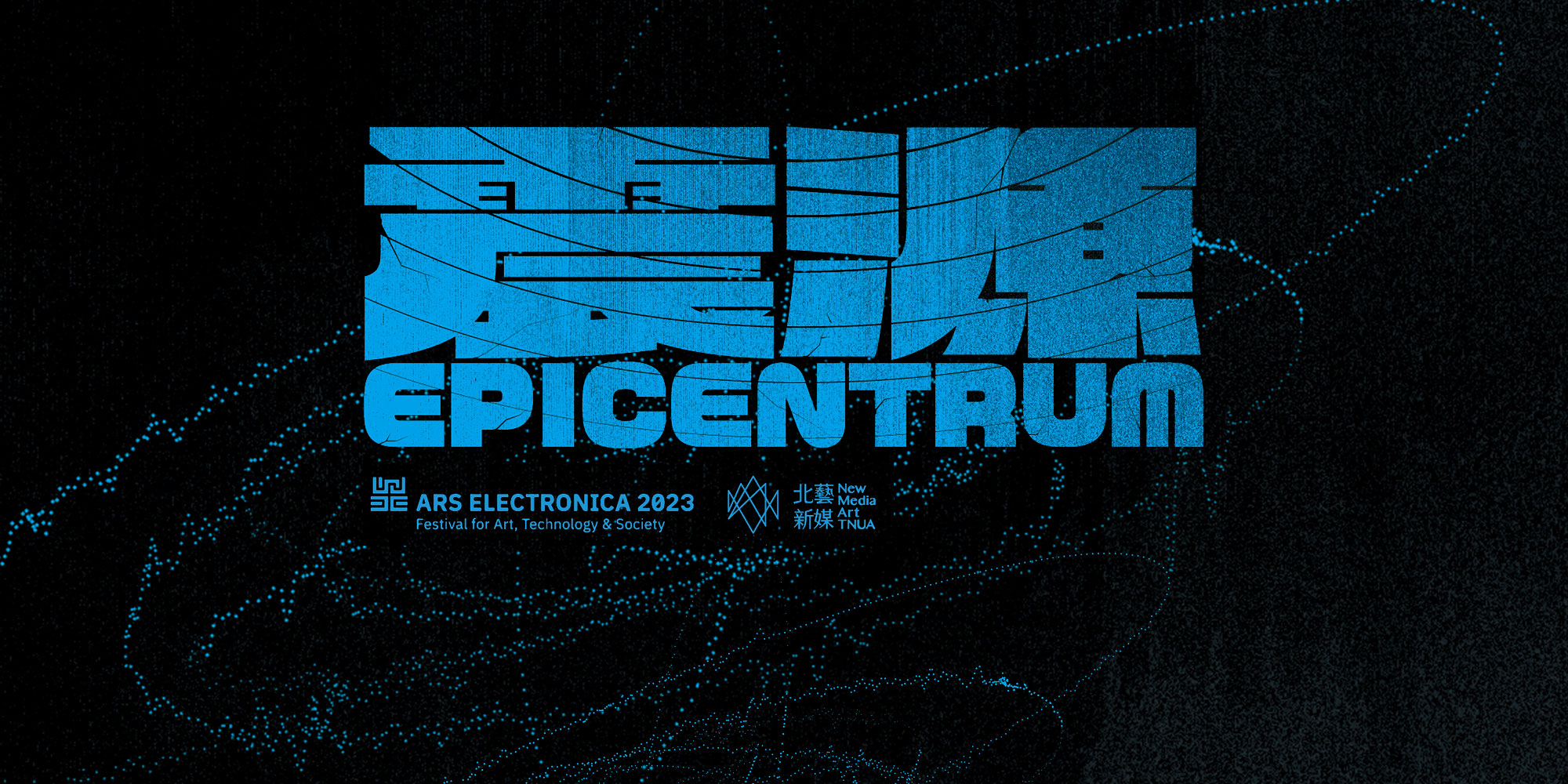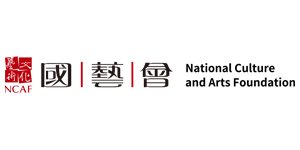When we look at our planet from the geological perspective of the Anthropocene, we see it as an ecosystem shaped by human activity, in which the layers of existence are closely interconnected and subject to vibrations. Epicentrum, an exhibition of electronics, reveals how organic and inorganic matter are interwoven and set in motion.
Through the lens of media art, the exhibition explores how media art in Taiwan is becoming a node where vibrations occur. Amidst a tense global situation, Taiwan is proving to be an epicenter of oscillations. Geologically located at the convergence of tectonic plates, its unique historical and geopolitical complexity has made it a contested territory. Questions of identity and sovereignty are fraught with complicated notions and the question of whether democracy can evolve or even be sustained is also an ongoing challenge. If art and technology remove the original barriers and bridge the boundaries between different realms, we can reshape the connections between ourselves and the environment and its vibrations.
-
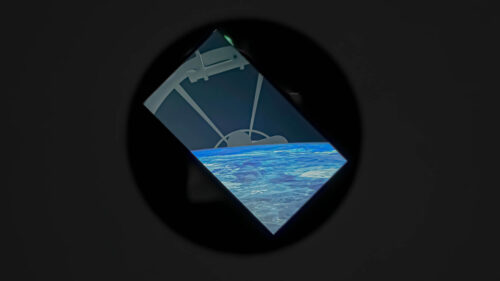
Altitude 70,000 Feet
Zhe-Zhi LIN (TW)
The work Altitude 70,000 Feet suggests the screen as a modern viewing medium to imagine a view from the cockpit of the U-2 reconnaissance aircraft and, more importantly, to overlay the concept of the screen as a window with the first-person perspective of a pilot.
-
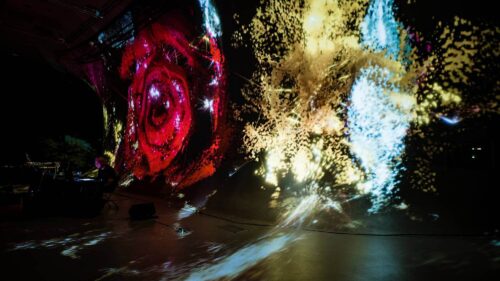
AUDIO-VISUAL PERFORMANCE
Taipei National University of the Arts (TW)
The Department of New Media Art at Taipei National University of the Arts presents an evening of audio-visual performances by artists Hsin-Yu Chang, Ting-Hao Yeh and Tsung-Yun Lai. The three artists will focus on the synergy of sound and image in real time, as well as the art of creative coding to transcend conventional boundaries.
-
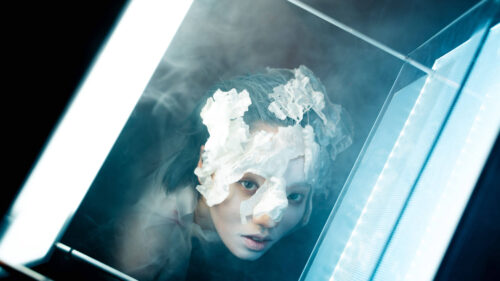
Colourless Spectrum
Chu-Hsun HSIEH (TW)
Colourless Spectrum was inspired by the personal experience and imagination of director Chu-Hsun. During a visit, he was drawn into a surrealist-illusory dimension by a refreshing and inspiring view, and he calmly enjoys every sensory perception that nature allows to flow through their body.
-
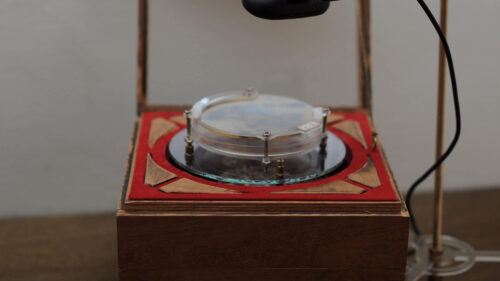
Container of Civilization
Tso-Yu CHIANG (TW)
What is the concept of time for mushrooms? From birth to death of a single mushroom in a petri dish may take only a month for us, but for the mushroom this time span can feel as long as our entire lives. It is hard not to imagine that there are “civilizations” of mushrooms.
-

Cyberriver
Yun-Jieh WU (TW)
Cyberriver attempts to portray the “give” and “take” of social media. Seemingly invisible, information seeps like water everywhere from transaction records to satellite tracking to chat rooms, collecting all personal and non-personal data.
-

Data-Verse Taipei 02
2ENTER | En-Chi CHUAN (TW), Cheng-Wei CHEN (TW), Chieh-Yi CHUI (TW), Ji-Rong LIOU (TW)
Information overload, mass worship, absurd combinations of things that have nothing to do with each other—everything is there, and nothing can escape. This immersive experience will envelop the audience in virtual images and introduce them to the complex and unfamiliar world of the internet, using the exhibition’s location and Taipei as the motif.
-
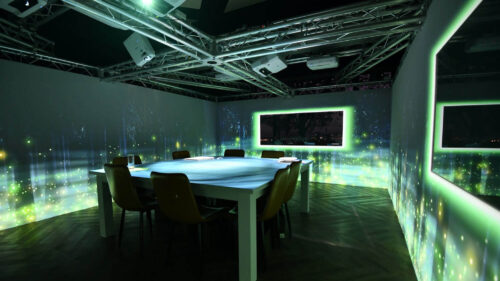
EAT Da Vinci
Jia-Ming Day (TW), Lien-Cheng Wang (TW), Tzu-Ching Huang (TW), Wei-Chih Lin (TW), Shu-Yu, Lin (TW)
are the three elements that compose the theme “EAT.” It defines the artists who create new media art with the experimental spirit inspired by Leonardo Da Vinci. Eating in the “Da Vinci Artificial Laboratory,” was altered from the VIP room of the Da Vinci kitchen.
-
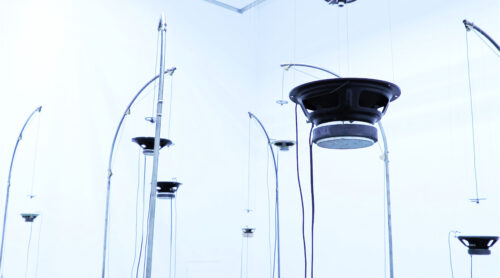
Feeding
Hsin-Yu CHANG (TW)
Sound often breaks the boundary of space, but at the same time, constructs a sense of space. A microphone continuously picks up the subtle vibrations in the air, and the feedback with the speakers is continuously amplified.
-
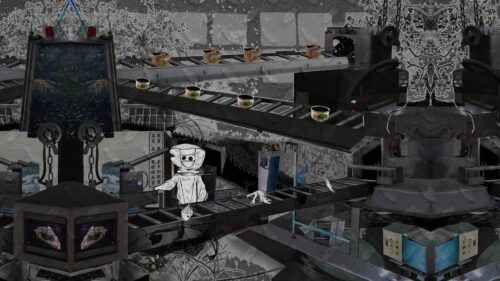
Humanlikely
Yueh-Jie CHEN (TW)
Humanlikely is inspired by a real fish canning factory, and reconstructed similar fictional scenes in visuals. The setting of the factory and the division of labor scenes on screen suggest an implicit social structure. Characters keep performing repetitive mechanical movements in four scenes.
-
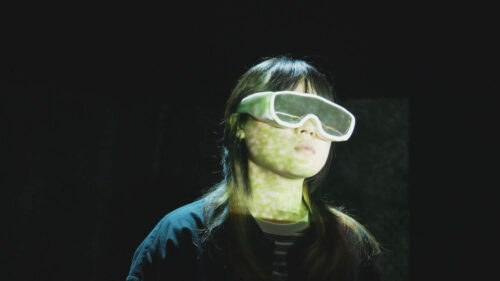
In Front of a Scenery
Chih-Yang CHEN (TW)
Using special glasses made of polarizers as the source of visual stimulation, and with the harmonious coordination of multi-channel reverberation and ambient lighting, the five senses except vision are infinitely enlarged due to the weakening of vision.
-

In the Dim Light of Night
Chang-En DING (TW), Cheng-Hao TSAI (TW)
This work focuses on the interdependent and constraining relationship that arises from the combination of “light, sensing and circuitry.” Given the proliferation of automated sensing, it explores the formation of dialectical connections between components, people, systems and structures.
-
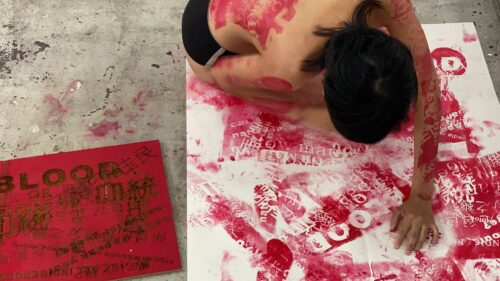
Raw ⇆ Ripened ⇆ Happiness
Ciwas Tahos (TW)
A set of stereotypes and problematic expressions subtly exist everywhere. This colonial viewing system is nuanced, microaggressions permeate society and slip off the tongue unchecked, perpetuating the colonial perspective.
-

Reality Image-Light Switch
Kun-Han HO (TW)
Reality Image-Light Switch is a site-specific video installation that utilizes a projector to project a “blank light without an image,” serving as a replacement for the exhibition lighting. The installation attempts to create an illusionary experience through the manipulation of the switch and the alternating illumination of the on-site lights.
-

TV Wall
Ssu-Chi HOU (TW)
From the perspective of pixels, even a completely white image shows pixel grids when played back on any screen. The image simulation enlarges the pixel grids, while at the same time, the image takes the edge of the TV screen as an element.
Credits
Co-curators | Jia-Ming Day, Lien-Cheng Wang, Yen-Ju Lin
Artists | 2ENTER (Cheng-Wei Chen, Chieh-Yi Chui, En-Chi Chuang, Ji-Rong Liou), Chang-En Ding, Zhe-Zhi Lin, Cheng-Hao Tsai, Chih-Yang Chen, Chu-Hsun Hsieh, Anchi Lin (Ciwas Tahos), Hsin-Yu Chang, Kun-Han Ho, Ssu-Chi Hou, Tso-Yu Chiang, Yueh-Jie Chen, Yun-Jieh Wu
New Media Art Faculty | Chun-Chi Lin, Der-Lor Way, Fujui Wang, Goang-Ming Yuan, Jia-Ming Day, Lien-Cheng Wang, Jun-Jieh Wang, Shih-Wei Sun, Shu-Yu Lin, Yu-Hsiung Huang
Audio-visual Artists | Hsin-Yu Chang, Ting-Hao Yeh, Tsung-Yun Lai
Supported by:
National Culture and Arts Foundation (TAIWAN)
